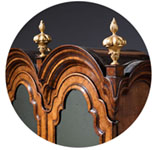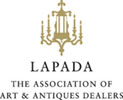Charles II Japanned Cabinet
of exceptional condition c. 1675 raised on a contemporary stand
SOLD
Request Information
Follow Us
Charles II Japanned Cabinet of exceptional condition c. 1675 raised on a contemporary stand
An English Charles II Japanned cabinet of exceptional condition c. 1675 with complete original brassware raised on a contemporary stand. The underside of one of the drawers features a Baron’s stamp, which is currently the subject of much debate and further research.
The exterior of the cabinet is a fine example of lacquer- and raised gesso-work. Appropriate to a piece of its period, the exterior is beautifully oxidised yet untouched with stunning patination. By contrast, the interior is brightly decorated with chinoiserie in delightful unoxidised, original condition.
The interior features English interpretations of typical Japanese scenes of couples, which span the human and animal kingdom, from humans to Muntjac deer to cranes to pigeons, that run from the celestial to the underworld.
Condition
Excellent condition lacquerwork throughout with original chased brass furniture, lock plate and ring pull handles with floral back plates.
Provenance
From private UK collection. Research suggests that it was also the property of a hitherto unnamed Baron.
Literature
Dimensions
W: 95cm
D: 42cm
PREVIOUSLY SOLD
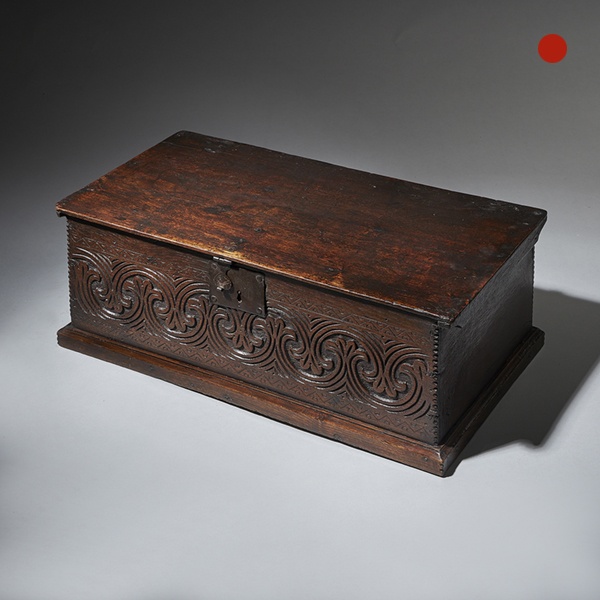
Late 17th Century Charles II Carved Oak Bible Box, Deed Box, Blanket Box,or Candle Box
Late 17th Century Charles II Carved Oak Bible Bo, Deed, Blanket, or Candle Box Sold Follow UsLate 17th Century Charles II Carved Oak Bible, Deed, Blanket, or Candle Box A superb and original late 17th century oak box with excellent and deep...
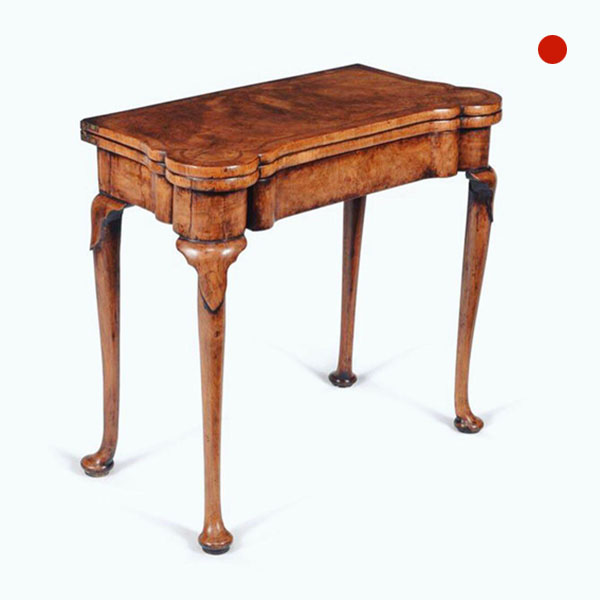
Fine 18th Century Queen Anne Burr and Highly Figured Walnut Card Table
Fine 18th Century Queen Anne Burr and Highly Figured Walnut Card Table SoldFollow UsFine 18th Century Queen Anne Burr and Highly Figured Walnut Card Table A fine and rare Queen Anne burr and highly figured walnut card table, circa 1710...
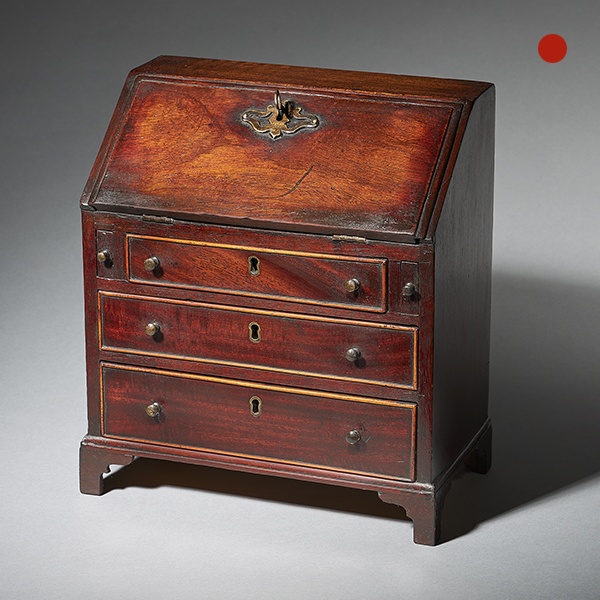
18th Century George II Mahogany Miniature Bureau
18th Century George II Mahogany Miniature Bureau SOLD Follow Us18th Century George II Mahogany Miniature Bureau What came first.... the miniature or the full scale? This small scale model at just 9” wide dates from the very beginning of the...

17th Century Charles II Cocuswood Lace Box, Circa 1660, England
17th Century Charles II Cocuswood Lace Box, Circa 1660, England SoldFollow Us17th Century Charles II Cocuswood Lace Box, Circa 1660, England An extremely rare and important Cocuswood oyster (Brya ebenus) lace box from the reign of Charles II,...
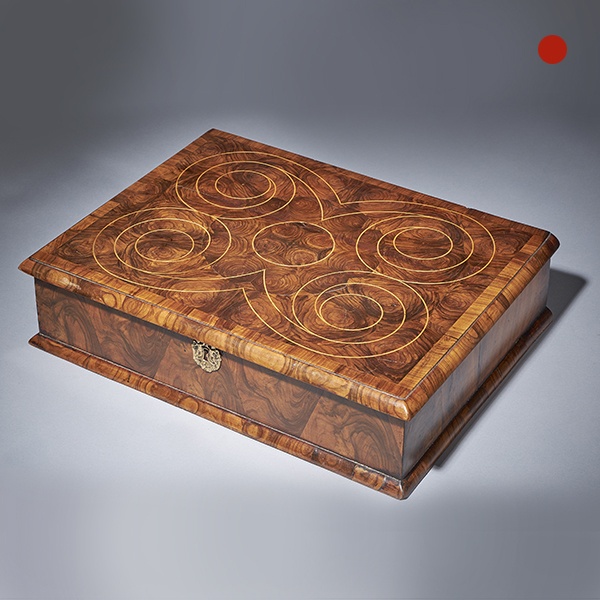
A superb 17th-century olive oyster lace box from the reign of King Charles II, circa 1675-85.
A superb 17th century olive oyster lace box from the reign of King Charles II, circa 1675-85. Geometric patterns adorn the selected and book-matched hand cut olive oysters to the top which is beautifully inlaid with fine boxwood stringing, cross-banded and edged with cross grain mouldings, all in figured olive.
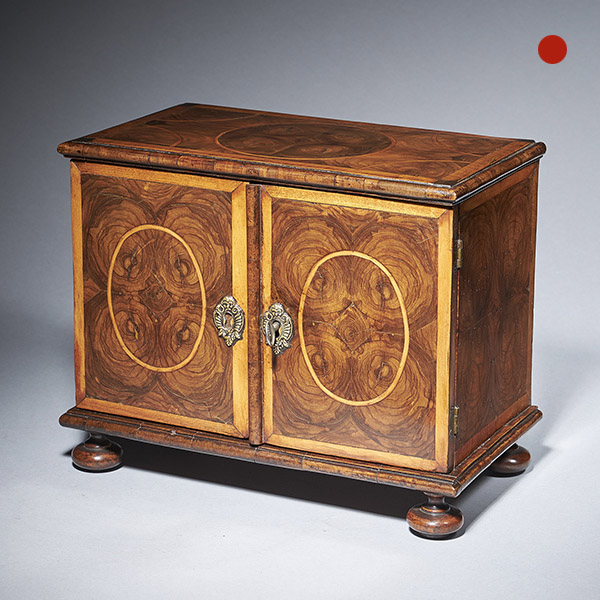
17th-Century miniature table cabinet
The miniature table cabinet opens to an arrangement of drawers, a row of four, a bank of four and a long pen drawer, similarly veneered in oysters of olive.

Late 17th Century Charles II Carved Oak Bible Box, Deed Box, Blanket Box,or Candle Box
Late 17th Century Charles II Carved Oak Bible Bo, Deed, Blanket, or Candle Box Sold Follow UsLate 17th Century Charles II Carved Oak Bible, Deed, Blanket, or Candle Box A superb and original late 17th century oak box with excellent and deep...

Fine 18th Century Queen Anne Burr and Highly Figured Walnut Card Table
Fine 18th Century Queen Anne Burr and Highly Figured Walnut Card Table SoldFollow UsFine 18th Century Queen Anne Burr and Highly Figured Walnut Card Table A fine and rare Queen Anne burr and highly figured walnut card table, circa 1710...

18th Century George II Mahogany Miniature Bureau
18th Century George II Mahogany Miniature Bureau SOLD Follow Us18th Century George II Mahogany Miniature Bureau What came first.... the miniature or the full scale? This small scale model at just 9” wide dates from the very beginning of the...

17th Century Charles II Cocuswood Lace Box, Circa 1660, England
17th Century Charles II Cocuswood Lace Box, Circa 1660, England SoldFollow Us17th Century Charles II Cocuswood Lace Box, Circa 1660, England An extremely rare and important Cocuswood oyster (Brya ebenus) lace box from the reign of Charles II,...

A superb 17th-century olive oyster lace box from the reign of King Charles II, circa 1675-85.
A superb 17th century olive oyster lace box from the reign of King Charles II, circa 1675-85. Geometric patterns adorn the selected and book-matched hand cut olive oysters to the top which is beautifully inlaid with fine boxwood stringing, cross-banded and edged with cross grain mouldings, all in figured olive.

17th-Century miniature table cabinet
The miniature table cabinet opens to an arrangement of drawers, a row of four, a bank of four and a long pen drawer, similarly veneered in oysters of olive.
YOU MAY ALSO LIKE
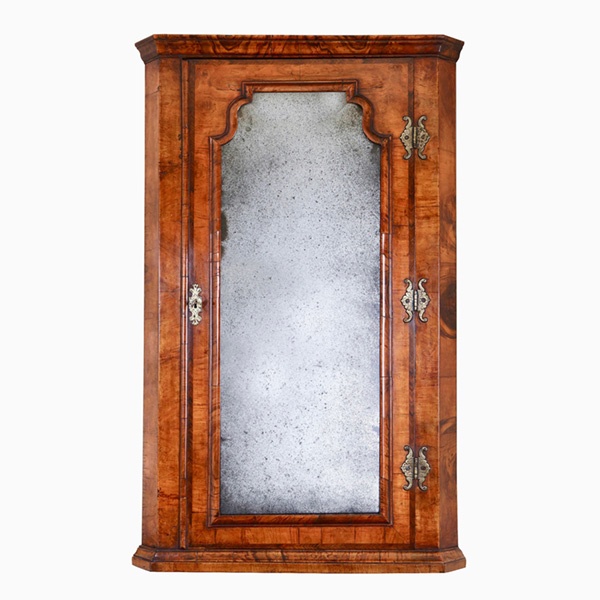
Queen Anne Walnut Corner Cupboard with Bevelled Mirror Plate
A truly remarkable find in original condition. To the door a shaped soft bevelled mirror plate is framed by a cross-grain molding of typical queen Anne design which is further cross-banded, feather-banded and edged to the opening with a single de-molding.

Queen Anne Walnut Corner Cupboard with Bevelled Mirror Plate
A truly remarkable find in original condition. To the door a shaped soft bevelled mirror plate is framed by a cross-grain molding of typical queen Anne design which is further cross-banded, feather-banded and edged to the opening with a single de-molding.
